Can You Draw?
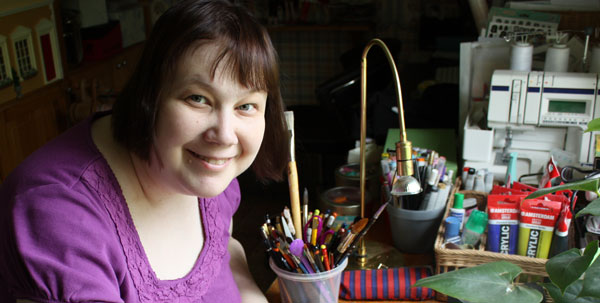
All my life I have wanted to learn how to draw. Whatever skills I have learned over the years, there has always been this one yearn: to know how to draw. Sometimes I have thought that I finally master the skill, only to realize it again: No, not yet.
But now, when most of this agony is over, I want to share my story and ask you: what does it mean when you say you can or can’t draw? People often say: “I can’t even draw a stick figure!” That probably means that they refuse even to try.
Drawing Stick Figures

My most humiliating moment connected to drawing was when I was about 8 years old, and we had to draw trees at school. “Do not make a mess,” the teacher said. But oh no, I did make a mess, and I had to watch my teacher show me how to draw a tree. The tree that she drew looked nothing like one. It was barely a branch, almost just a stick. At least it was not a living tree. I heard her sighing and saying that she could not draw either!
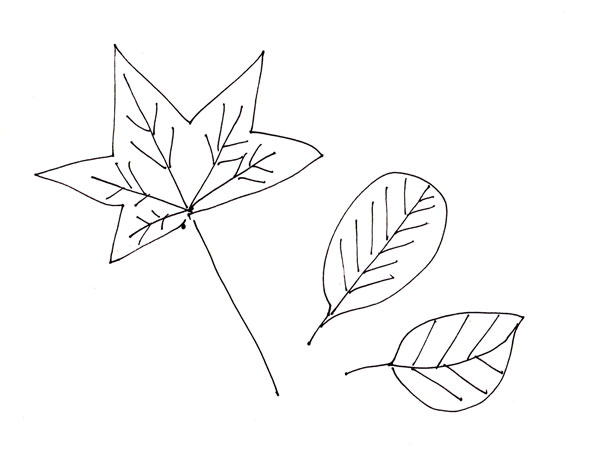
Drawing Realistic Images
I continued practicing. As a result, I realized that those who drew stick figures did not actually look at the object. When they were given the three leaves, they drew three symbols of leaves. So I thought that if I examined the objects like they were not leaves at all, I could draw them more realistically.
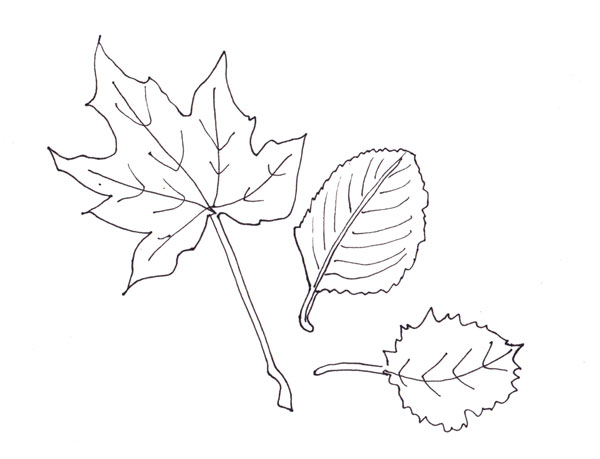
But the three leaves, which I brought home in a pocket, are beautiful, natural, living things. When I look at them I feel their presence and they evoke thoughts. They are not just flat objects either. If I drew how my eyes trace the leaves, how would that look like?
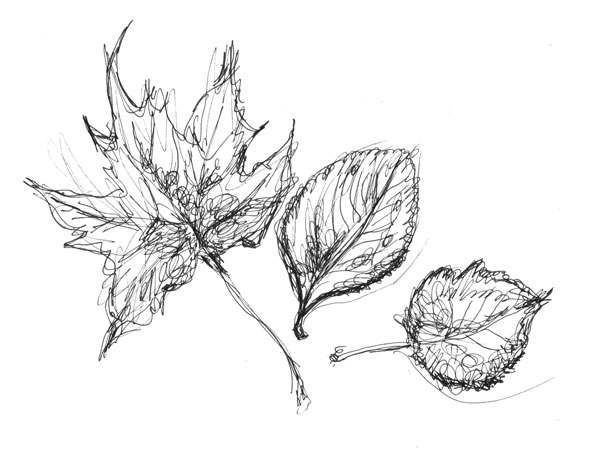
This is what I learned in my teenage years: I could use several lines for drawing, starting with thin and light lines and ending with strong dark lines. The result would not be bad at all, even if I made mistakes in the beginning. This was when I first assumed that I could draw. At least I was able to produce realistic looking pictures.
Drawing without Models
But soon, I got doubts. Browsing art books every week at the local library of the small hometown, I saw many outstanding masterpieces. The deeper I dived into the art history, the more I thought about the difference between copying and drawing from the memory. I assumed that most of the great artists had the ability to understand proportions and structures so that they could draw anything, without having a model or a photograph.

So I abandoned the models, mirrors, and other images. My goal was to draw whatever popped up into my mind. The amount of drawing that I had done had left marks in my memory. With some practice, I was able to draw ordinary objects, like leaves. But again, it did not satisfy me. I had discovered a new factor: a line. A line is not just a line. It is a kind of signature. It can be fast and effortless or slow and dull. And mine was more the latter.
I discovered artists who really can draw. Like Finnish female artist Miina Äkkijyrkkä. I envied those flowing lines. Meanwhile, I had graduated as an industrial designer. Should I get back to school again? And if so, where? I decided to learn by myself.
At this point, I have to tell you that I have learned many crafts by myself, and it has not always been very efficient. When I learned quilting, I refused to iron even if every quilting book said so. It took me ten years to master that skill, meaning: use that iron and acknowledge that it does make the difference. When I decided to learn drawing, I was afraid that I would omit something important again while rushing towards the goal. So I took a very slow approach. I figured out that if I start with a basic shape and make enough repeats, I will learn to draw. So I picked my favorite shape, a circle, and began doodling.
Drawing Styles
While learning to draw a circle with an expressive line, I realized that I could pick out my circles from those made by others. So I added a new factor to the definition of drawing: a style. I wanted to have my own style, my own line. Most evenings, after the day job, I drew circles examining my thoughts and the way of looking at the world. I learned that a simple circle could be a very complicated shape. And even more: when combined with other circles, it’s almost too complicated. You can draw small circles, big circles, closed circles, open circles, ovals … add circles inside another circle, build a tower with circles … I became fascinated by the circles. It felt like knitting: a small movement after another, and within few weeks, you will have something grand to look at!
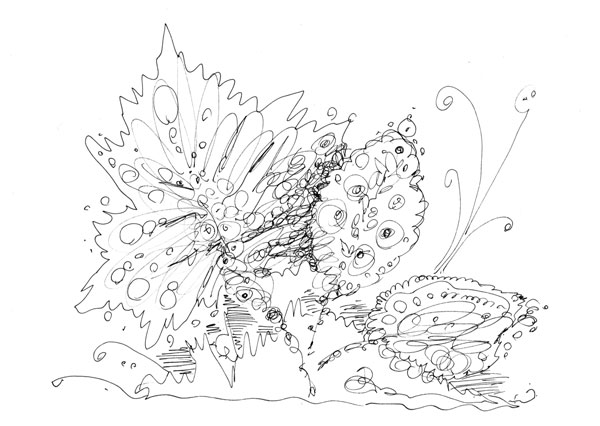
As months and months went by, I had a growing hunch that I had found my style. I became convinced that if I am brave enough to let that circle alter its shape, I can draw with my own voice. Once I jumped into that, I felt tremendous joy. Looking at the shapes flowing out of my pen was amazing. Could I finally call that drawing?
Then I remembered something that I had always loved: imitation. The joy of finding my own style changed to the urge to learn to imitate different styles. It would be so great to draw like many masters that I had admired since browsing the art books at the public library!
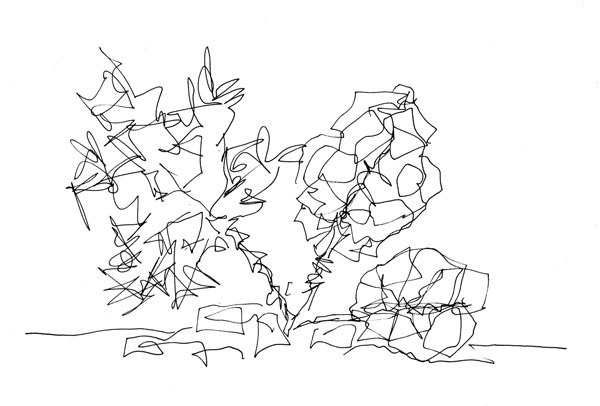
I wanted not only to draw like romantic, but I also wanted to draw in an edgy and masculine way.
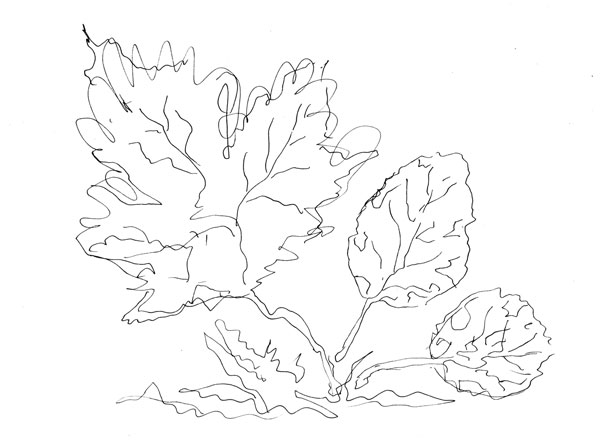
I wanted to simplify without taking the life out of the drawing.
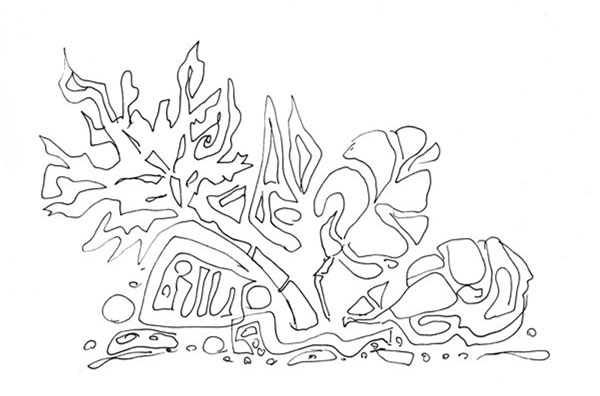
I wanted to learn various historical styles, like art nouveau.
Drawing from Imagination
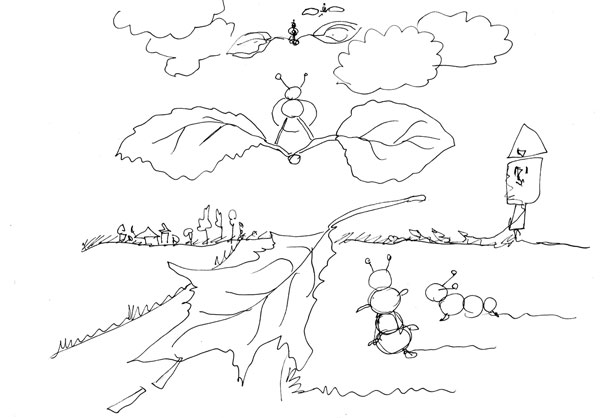
And I also wanted to learn to use the imagination and play with the theme. Wouldn’t it be cute if ants could use the falling leaves as airplanes? Then they would certainly have their own landing strip and air traffic control!
The Definition of Drawing
Then one day I realized that, for me, learning how to draw is not about me drawing. It is more about making you draw. I think that teaching drawing is my final definition about the ability to draw. That’s why I am currently creating a book about how to learn drawing in a way that is enjoyable and something very different from the tutorials you have seen around the internet and book stores.
Let me be your art teacher: Subscribe to my weekly emails!
24 thoughts on “Can You Draw?”
Comments are closed.
Loved reading your journey – I also thought I could not draw. I don’t practice enough – but have learned to let my brain translate what my eyes see – so it’s not just a representation of a picture. I need to work harder though – you are inspiring.
Thanks, Gina! The subject of drawing is very wide and I find it really interesting to hear how people define it!
Thanks. That was a good read. I’ll read it again later. I really liked the part of giving a circle an expressive line, or your own style. I remember as a child rewriting my name, practicing to get the perfect dot over the i. Somewhere, I forgot that playfulness or creativeness.
Thanks, Denise! Your comment touched me as I could relate to that really well too. Creativity is so natural when we are children!
Thanks for wonderful article!
Thanks, Yelena!
I can understand what you are saying so much. I started drawing when I was a teen (dragged to a free art class with my brother) and I felt so insecure about everything I drew in that class. It didn’t help that the “teacher” simply pulled out stacks of National Geo and had us copy photos and “design that ‘water’ ‘tree’ whatever” While there is value in copying, I always felt it was cheating and not truly my own work esp. entered into contests. Still, it took about a year before I started to get brave enough to draw whatever I wanted on my own and be happy with the results- color pencils set me free.
Now more than ten years later I have a degree in painting, stacks of notebooks filled with doodles that are at least therapeutic if not useful for my paintings and I’m slowly figuring out STILL that painting comes first. I can’t force “style,” it comes with work and exploration and discovering more about who I am with each painting or drawing. It is hard. There is also still so much to learn. 🙂
Good luck with your art and I am enjoying your thoughtful blog. The vid post about borrowing from various art souces was one of the better youtubes I’ve seen in a while, so I am looking forward to a book from you!
Thanks so much for your interesting story and thoughts on drawing! I am honored and happy to have brought some new thoughts to you, despite of your vast experience in art. (Penwiper is refering to this video blog post: http://www.peonyandparakeet.com/video-blog-mix-and-match-inspiration/)
I like your way of looking at things & you explain it very well! I always thought I wasn’t very good at drawing & left it for many years. When I later got back to it, I found I actually wasn’t too bad – maybe getting older brings more understanding or a more developed way of seeing.
Thanks, Linda! I am sure that the age and the amount of analyzing various artworks helps here. Sometimes we are too hard for ourselves. Have enjoyable moments with art and drawing!
Simplify without removing life from the subject. What a simple yet fundamental statement to any form of art. This will stick with me for as long as I live. You are such a thoughtful artist. Not just in sharing but in how you work. I normally enjoy videos and don’t read so much but don’t want to miss anything you post! Thanks!
Thank you so much, Mary!! I understand, as visual persons, it is sometimes difficult to focus on the text. Great to hear that you like my posts, sometimes writing is the best way to communicate!
What a unique perspective! It was so interesting to see the evolution of drawing style – from at first drawing stylized leaves the way you think they should look to experimenting with the style of others, and then finding your own style. I am very much looking forward to your book about drawing! Thanks for your continued inspiration!
Thank you, Claire!!
This is great!!!! As a retired art teacher, the idea that art is about drawing has been a focal point for my pedagogy. I have spent more time undoing insecurity in drawing than I have “teaching” anything. Drawing is about seeing. That’s it! Your post with examples shows people how to think about drawing in a simple, thoughtful and non-threatening way as compared to the “how-to-draw” techniques. Bravo!
Thanks, Marcia! I am flattered to get a comment like this from the art teacher!
Thank you for this inspiration…. I, too, I’m looking for my OWN style. I can mimic just fine, but I want what comes out of my pen to be just ME. Great post!!
Margo, thanks for your comment! I think one factor for your own style is to find out what kind of drawing you enjoy the most! Sometimes if we only look the end result, not the actual process, we might get lost in what we think we are, instead of just being what we are.
Thanks so much for this newsletter. I have the computer equipment, programs, all the supplies you could want and I still just sit there and stare at them because I believe I cannot draw. I want to draw everything, but cannot find my “thing.” I’ll keep on trying to find it. But I better hurry, time is running out for me and I want something to leave for my granddaughter!
Kathy, thanks! I think that some intuitive techniques might work for you. Have you tried the process presented in this post: http://www.peonyandparakeet.com/creativity-expressed-in-art-journaling/
also, I would recommend my video about intuitive watercolor painting
http://www.peonyandparakeet.com/make-your-watercolors-speak-to-you/
Hope these help!
i hope you’ve read, The Dot, by Peter H. Reynolds!
reminds me very much of your circle story!
Thanks, Ann! I have not read! Great tip!
I always love how you explain things. You are such an inspiration! Thank you.
Thank you, Lou!!